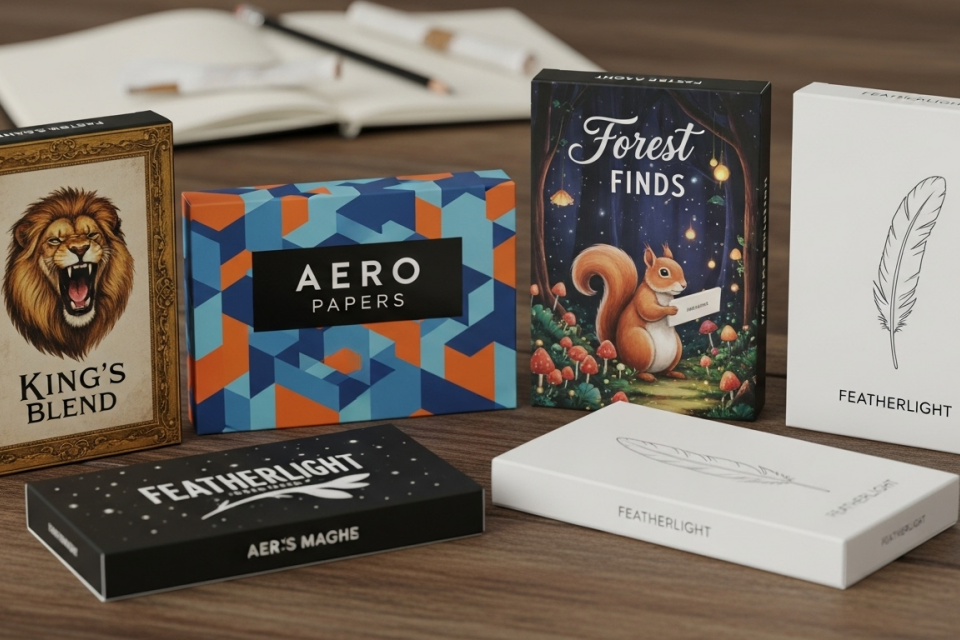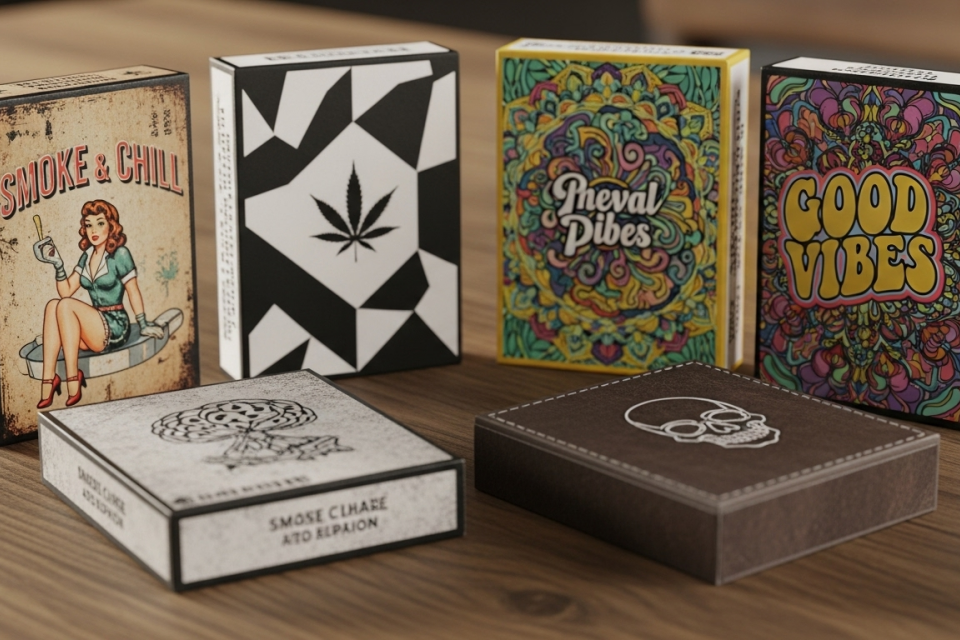Cannabis Packaging Requirements
This article covers key cannabis packaging requirements, from regulatory compliance and child-resistant design to labeling rules and sustainability trends.
Summary
Cannabis packaging requirements refer to the regulations and standards governing the packaging and labeling of cannabis products to ensure safety, compliance, and responsible consumption. These requirements have become increasingly significant as more jurisdictions legalize cannabis, necessitating a framework that protects minors, informs consumers, and adheres to public health guidelines. In Canada, for instance, the Cannabis Act outlines strict packaging mandates, including child-resistant features, tamper-evidence, and clear labeling of potency and health warnings, reflecting the industry’s commitment to public safety and regulatory compliance.
The packaging landscape for cannabis products is marked by ongoing innovations and challenges, particularly regarding sustainability. As environmental concerns rise, many cannabis brands are adopting eco-friendly materials and designs to appeal to conscientious consumers. This shift not only reduces environmental impact but also positions companies favorably in a competitive market that increasingly values sustainability. However, balancing these sustainable practices with regulatory compliance—particularly regarding child-resistant packaging—remains a complex issue for producers.
Compliance with cannabis packaging requirements is enforced through regulatory bodies, with penalties for violations potentially reaching significant monetary fines. In addition, the legal landscape is further complicated by Indigenous and local regulations, which may impose additional stipulations on packaging and labeling. This multifaceted regulatory environment underscores the importance of adherence to safety and health guidelines while navigating the complexities of local governance.
Overall, cannabis packaging requirements play a crucial role in shaping the industry, influencing everything from product safety to consumer perceptions. As the market evolves, the ability of brands to adapt to regulatory changes while embracing sustainability will be critical in fostering consumer trust and ensuring long-term success.
Table of Contents
Legal Framework
The legal framework surrounding cannabis packaging in Canada is primarily governed by the Cannabis Act and its associated regulations. This framework establishes a series of guidelines and requirements for the packaging, labeling, and sale of cannabis products to ensure public safety and compliance with legal standards.
Packaging Requirements
Under the Cannabis Act, all cannabis products must adhere to strict packaging requirements designed to protect minors and prevent misuse. These regulations mandate that packaging be child-resistant, tamper-evident, and non-resealable for products that contain edible cannabis. Additionally, the labels must include standardized information, such as the product’s potency, the presence of allergens, and health warnings.
Regulatory Authority
The Governor in Council has the authority to establish regulations related to cannabis packaging, including specifications for the design, labeling, and sale of cannabis products. This includes defining the conditions under which licenses and permits for cannabis-related activities may be granted, as well as ensuring that packaging adheres to safety and health guidelines.
Compliance and Enforcement
To enforce compliance with these packaging requirements, the Act outlines penalties for violations, which can include fines up to $1,000,000 depending on the severity of the infringement. Furthermore, regulatory bodies are empowered to conduct inspections and require compliance agreements for entities engaged in the production and sale of cannabis products.
Indigenous and Local Regulations
In addition to federal regulations, Indigenous nations and local governments may also create laws governing cannabis packaging within their jurisdictions. The Lieutenant Governor in Council can authorize treaty first nations to enact laws that pertain to cannabis packaging and sales on their treaty lands, reflecting the unique needs and perspectives of Indigenous communities.

Packaging Materials
Packaging materials for cannabis products play a crucial role in ensuring product safety, compliance, and environmental sustainability. The choice of materials directly affects labeling accuracy, regulatory compliance, and the overall integrity of the product during transportation and storage.
Sustainable Materials
A growing trend in the cannabis industry is the shift towards sustainable packaging solutions. Many brands are exploring materials such as recycled, biodegradable, and compostable substances to minimize environmental impact. For instance, using post-consumer recycled content can significantly reduce waste and conserve resources. Additionally, minimalist design approaches that reduce excess packaging not only cut costs but also align with eco-friendly principles, appealing to environmentally conscious consumers.
Recycled and Alternative Substrates
Paper remains the most popular substrate among cannabis brands; however, it is essential to ensure that it comes from responsibly managed forests. Certification from organizations like the Forest Stewardship Council (FSC) can verify the sustainability of the source. Furthermore, innovative tree-free alternatives, such as hemp, sugarcane bagasse, and cotton, are emerging as viable eco-friendly options. These materials can provide the necessary functionality while also appealing to a market that prioritizes sustainability.
Child-Resistant and Compliance Considerations
Given the regulatory landscape, many cannabis products must meet specific compliance requirements, including child-resistant packaging. Materials used in child-resistant packaging must be FDA-approved and durable enough to withstand tampering. Additionally, state laws often mandate that personalized information, such as production and expiration dates, be included on the packaging, which can complicate recyclability and environmental friendliness. This necessity frequently leads to the use of stickers that compromise the recyclability of the entire packaging.
Innovations in Packaging Technology
While sustainable materials offer numerous benefits, they also present challenges in terms of product protection and shelf life. However, advancements in packaging technology are beginning to address these concerns, leading to the development of new materials that combine sustainability with durability. Innovations like tamper-evident seals and reusable designs are becoming increasingly popular, allowing brands to enhance consumer safety while promoting their products effectively.

Labeling Requirements
The labeling of cannabis products is governed by a comprehensive set of regulations that vary by state but generally include specific information that must be displayed on packaging. This includes the placement of required labeling, which is primarily mandated to appear on the outer layer of packaging.
Medical Cannabis Product Labels
For medical marihuana products, the labeling must include several critical pieces of information, all of which need to be approved by the relevant department prior to use.
- The name, address, and registration number of the registered organization.
- The product form and brand designation.
- The single dose THC and CBD content in milligrams (mg).
- A unique identifier for the product lot, such as a lot number or barcode.
- The quantity of the product included in the package.
- The date packaged and the date of expiration.
- Proper storage conditions.
- Warning statements about usage, including instructions for keeping the product secured and in its original container until use.
- A notice regarding health risks and the non-approval status by the FDA, advising users to avoid operating heavy machinery while under the influence.
Labeling Text Specifications
Labels must adhere to font size regulations; for instance, the informational panel text should be no less than 6 point font unless space is insufficient, in which case supplemental labeling with a minimum font size of 8 point must accompany the product. Additionally, labels must avoid any false or misleading statements about health benefits.
Ingredient Disclosure
All ingredients must be listed using their common names in descending order by predominance by weight, including any potential allergens. Information regarding the product’s nutritional content, such as sodium, sugar, carbohydrates, and total fat per serving, is also required. Furthermore, products cannot be labeled as “organic” unless they meet national organic standards set by the USDA.
Compliance and Enforcement
Compliance with these labeling requirements is monitored, and manufacturers must follow strict control procedures for issuing labeling materials. Misleading claims regarding the product’s origin or health benefits are prohibited, and violations may result in penalties, including the potential revocation of a patient’s registration.

Child-Resistant Packaging
Child-resistant packaging (CRP) is a critical aspect of product safety in the cannabis industry, designed to prevent accidental ingestion by children. This type of packaging must comply with standards set forth by regulatory bodies, ensuring that it is both durable and effective against unauthorized access by minors. CRP mechanisms may include features such as push-and-turn caps, squeeze-and-pull designs, and other complex opening mechanisms that require greater dexterity and strength than what young children typically possess.
Types of Child-Resistant Packaging
There are two primary categories of child-resistant packaging used for cannabis products:
Single Use Child-Resistant Packaging
Single-use CRP, often referred to as “Initial CRP,” is designed to be child-resistant at the time of purchase, but once opened, it no longer maintains this protective feature. Products that typically utilize single-use CRP include cannabis flower, pre-rolls, topicals, dab, shatter, wax, and vape cartridges. It is mandatory for these packages to bear a label indicating, “This package is not child-resistant after opening”.
Multiple Use Child-Resistant Packaging
In contrast, multiple-use CRP, or “Lifetime CRP,” retains its child-resistant characteristics throughout its life. These packages can be opened and resealed while still providing a level of protection against children accessing the contents. Edibles are the most common products that utilize multiple-use CRP, as they are often targeted for consumption and require ongoing safety measures to deter children from accessing them.
Importance of Child-Resistant Packaging
The implementation of child-resistant packaging in the cannabis industry serves multiple purposes. It not only adheres to legal requirements in many jurisdictions but also reflects a commitment to public safety and responsible business practices. By minimizing the risk of accidental ingestion, cannabis producers can protect children and enhance the industry’s overall reputation for safety and responsibility.
Regulatory Compliance
To be classified as child-resistant, packaging must meet the standards outlined in the Poison Prevention Packaging Act of 1970, which stipulates the criteria for “special packaging” aimed at preventing access by children. Additionally, packaging materials must comply with FDA food contact safety standards to ensure that they are safe for use with consumable products.
Sustainability in Cannabis Packaging
As sustainability becomes a priority in the packaging industry, the cannabis sector is also responding to consumer and regulatory demands for eco-friendly solutions. Sustainable cannabis packaging involves various practices aimed at reducing environmental harm throughout the packaging lifecycle. Brands are focusing on right-size packaging principles to minimize waste and carbon footprints, localizing supply chains, and sourcing materials from responsibly managed forests. The use of recyclable, compostable, or reusable materials such as glass and metal is encouraged, and packaging designs are being optimized to enable easy disassembly for recycling. Moreover, many cannabis companies are investing in innovative designs that not only enhance product presentation but also promote sustainability, such as refillable containers and take-back programs to foster a circular economy.
Eco-Friendly Packaging Practices
Sustainable cannabis packaging involves various practices aimed at reducing environmental harm throughout the packaging lifecycle. Brands are focusing on right-size packaging principles to minimize waste and carbon footprints, localizing supply chains, and sourcing materials from responsibly managed forests. The use of recyclable, compostable, or reusable materials such as glass and metal is encouraged, and packaging designs are being optimized to enable easy disassembly for recycling. Moreover, many cannabis companies are investing in innovative designs that not only enhance product presentation but also promote sustainability, such as refillable containers and take-back programs to foster a circular economy.
Challenges and Innovations
Despite the benefits, sustainable packaging in the cannabis industry presents challenges, including potential compromises on product freshness and shelf life when using certain eco-friendly materials. However, advancements in packaging technology are helping to address these issues, enabling the development of new materials that combine sustainability with durability. Additionally, regulatory frameworks can impact packaging choices, as stricter rules around child-resistant designs and labeling can inadvertently lead to increased packaging waste. Therefore, cannabis brands must navigate these complexities while prioritizing eco-friendly practices.
Consumer Impact and Market Positioning
Adopting sustainable packaging not only meets the growing consumer demand for eco-conscious products but also enhances brand reputation and value. Consumers are increasingly willing to pay a premium for products that align with their sustainability values, which translates to higher returns on investment for cannabis companies. Thoughtfully designed packaging that reflects a brand’s commitment to sustainability can differentiate products in a competitive market, fostering customer loyalty and engagement. By prioritizing sustainability in their packaging strategies, cannabis brands are positioning themselves for long-term growth in an evolving industry landscape.

Challenges and Considerations
The cannabis packaging industry faces a variety of challenges and considerations that impact both compliance and market competitiveness. As the industry continues to evolve, these challenges must be addressed to ensure sustainability, regulatory compliance, and cost-effectiveness.
Regulatory Compliance
Navigating the complex and constantly shifting legal frameworks across different jurisdictions poses a significant challenge for licensed producers (LPs) of cannabis. Efficiently managing these regulations requires a multifaceted approach, including proactive strategies, technological innovation, and ongoing education for staff. Many LPs find themselves walking a tightrope between adhering to stringent regulations while trying to maintain profitability. Failure to comply can lead to severe penalties, including administrative monetary fines and even license revocation.
Cost Management
The financial implications of high-quality, compliant packaging are considerable, especially for smaller producers who may struggle with limited budgets. Achieving a balance between cost-effectiveness and regulatory compliance necessitates innovative thinking and strategic planning. While investing in compliant packaging might increase upfront costs, it acts as a crucial investment in risk mitigation, as poorly designed packaging can lead to labeling errors, regulatory penalties, or product recalls.
Sustainability Challenges
Handling THC-containing, post-consumer waste remains largely unaddressed in most state regulations, reflecting the nascent stage of the cannabis industry’s journey toward sustainability. Companies that prioritize sustainable practices may not only enhance their environmental footprint but also enjoy cost savings and improved customer experience. A focus on sustainability can differentiate brands in a crowded marketplace and provide significant opportunities for manufacturers offering ancillary products to the cannabis industry.
Packaging Design
The importance of customized and brand-centric packaging designs cannot be overstated. While unique finishes and customizations can enhance shelf appeal, they often come at a higher cost, especially for early production runs. Investing in efficient packaging design—such as modular sizes and easy-to-label surfaces—can reduce labor costs and fulfillment times, ultimately impacting the bottom line positively. Additionally, durable materials can minimize product loss and damage during transit, which is critical for maintaining profitability.
Market Dynamics
The complicated patchwork of regulations also affects the market dynamics of packaging costs, as larger volume orders typically offer significant savings. However, the need for compliance can sometimes inhibit bulk purchasing strategies, as producers must ensure that their packaging meets regulatory standards before investing in larger quantities.
Recent Trends and Future Outlook
Evolving Regulatory Landscape
The cannabis packaging market has seen significant changes in recent years, particularly due to evolving regulatory requirements. As of 2023, major developments include the expansion of delivery services and the introduction of new packaging and labeling mandates aimed at improving compliance and safety for consumers. These changes are part of a broader effort to address challenges that licensed businesses face, including extensive operational restrictions and the need for packaging solutions that enable them to compete with the illicit market.
Consumer Expectations and Brand Perception
As the cannabis industry matures, consumer expectations for product presentation have risen sharply. In 2025, it is anticipated that packaging will play an increasingly critical role in shaping brand perception. Modern consumers expect sophisticated designs that reflect quality and reinforce brand identity. Thus, packaging strategies must align with evolving trends to meet these heightened consumer demands and enhance overall customer satisfaction.
Integration of Technology
The integration of technology into cannabis packaging is another emerging trend. Innovations such as augmented reality (AR) experiences, which allow consumers to interact with product information via their smartphones, are expected to become more prevalent. Additionally, advancements in sustainable materials are likely to influence the packaging landscape as brands seek eco-friendly solutions that do not compromise safety and compliance.
Challenges and Opportunities
Despite the opportunities presented by these trends, brands must navigate a complex regulatory environment. Packaging requirements vary significantly by state, and compliance with regulations concerning materials, labeling, and product safety is paramount. The potential for cost savings through proposed regulatory amendments could enable greater flexibility in packaging choices, fostering innovation while maintaining public health objectives.
Long-term Strategies
To thrive in this competitive market, cannabis brands must view packaging as a vital investment rather than a mere cost-saving measure. Effective packaging can help prevent costly errors, enhance product protection, and build consumer trust. It serves as both a marketing tool and a means of ensuring compliance, thereby supporting long-term brand loyalty and customer retention. In this dynamic environment, businesses that prioritize thoughtful, compliant, and aesthetically pleasing packaging will likely stand out and drive sales growth.
